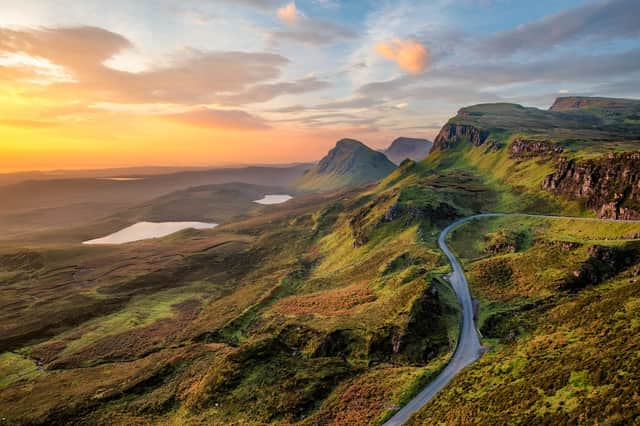Prof James Curran: Scotland is short-changing its environment, undermining one of our greatest assets and jeopardising our future


Scotland trades on its environment with images of misty mountains, soaring eagles, heather moors, wooded glens, and clear waters turned into golden whisky. The Scottish Government even says that it “aspires to be the greenest country in the world”.
But Scotland’s natural environment faces enormous challenges. The condition of Scotland’s nationally protected nature sites is now worse than in 2018, and wildlife numbers on land and at sea have declined by over 30 per cent in the past quarter of a century. The Chair of NatureScot has recently said that Scotland is one of the most nature-depleted countries in the world.
Advertisement
Hide AdAdvertisement
Hide AdMinisters plan to set legal targets to reverse these trends, and have set out their plan of action in a new Biodiversity Strategy. This is of course hugely welcome. But there’s a catch.
Setting a target to restore nature is easy – but how do you know that you’ve met it? Well, you need to establish a baseline of what our natural environment looks like today. Then, where you can see that a habitat is declining, or a river is polluted, you take action to improve it. Then, by measuring conditions against that baseline, you can tell if things have improved.
This should be the bread and butter of our environmental agencies, NatureScot and SEPA. But, since 2010, both agencies have had massive real-terms budget cuts, of 40 per cent and 26 per cent respectively. The publicly-funded environmental research budget, which provides the science, data and evidence, needed by these agencies to do their job effectively, has suffered even worse and been cut by 55 per cent over the same period. Managers end up spending their time on cost-cutting rather than environmental protection.
Should we be surprised, then, that monitoring of our environment is so patchy? That too many of our protected areas are in poor condition? That water quality targets have consistently been missed, despite being revised downwards? In 2009, just 61.3 per cent of Scotland’s rivers and freshwater lochs were in good or better condition, and that had only edged up to 64.2 per cent by 2020. For our surrounding seas, there is apparently “insufficient data to allow detailed assessment”.
Scotland’s terrestrial environment is treasured for its own sake but it has also been valued as worth £250 billion. Sadly, considering its dire state, that valuation has remained unchanged over the past 15 years. A revealing comparison is that the annual insurance cost of a building is reckoned to be about 0.08 per cent of its asset value so you might expect Government to spend £200 million per year insuring Scotland’s environment or, in practice, funding its environment agencies. But they jointly receive only £110m, that’s less than 60 per cent of what might reasonably be expected.
The Biodiversity Minister Lorna Slater has said: “The Scottish Government is clear that this is an emergency that requires an emergency response.”
Despite pledges to maintain or exceed European environmental standards, Scotland is spending less than our neighbours on the environment as a proportion of the size of our economy.
Total spending on environmental services comes to around 0.6 per cent of Scotland’s GDP, only 80 er cent of the European average, and less than half of the Netherlands, in caring for our precious environment.
Advertisement
Hide AdAdvertisement
Hide AdWhichever way you look at it, Scotland is short-changing its environment, as well as the businesses which depend on it, while undermining one of our greatest assets and jeopardising the future of all who live here. The imminent Scottish Government budget can change all that.
Professor James Curran is an environmental scientist and former chief executive of the Scottish Environment Protection Agency
Comments
Want to join the conversation? Please or to comment on this article.